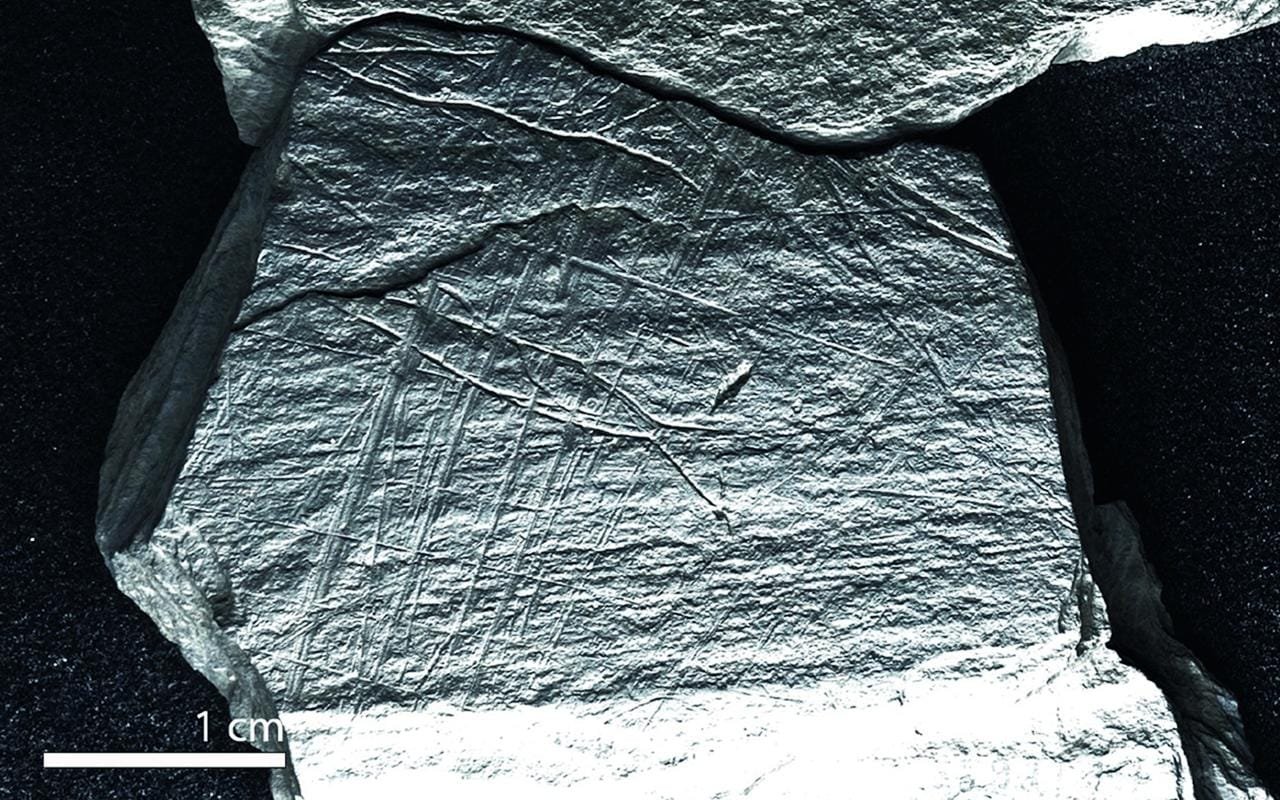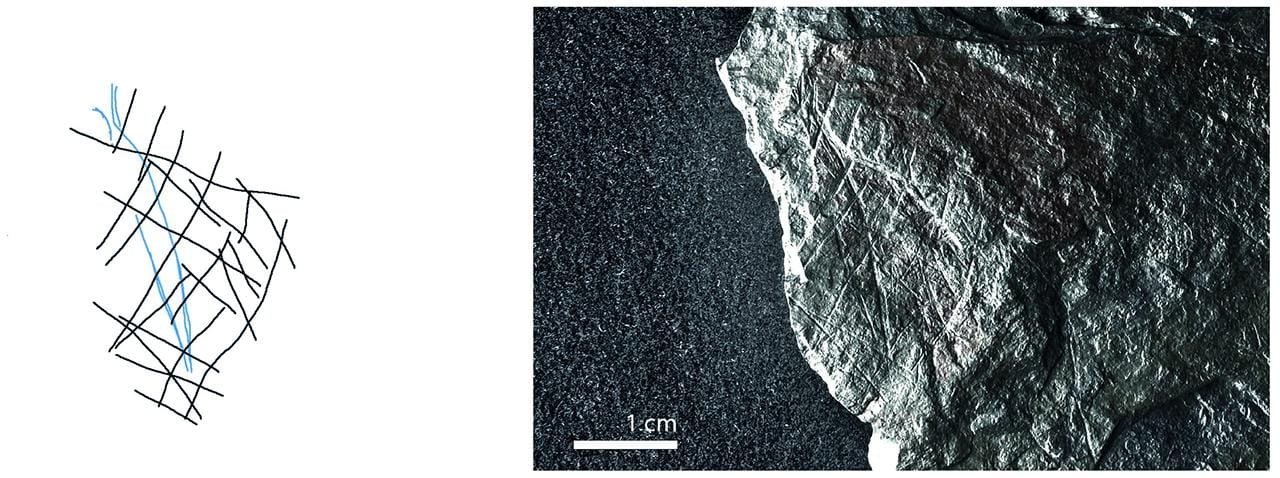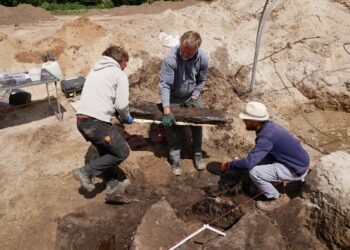At the Gönnersdorf archaeological site along the banks of the Rhine in Germany, an interdisciplinary team from Durham University and the Monrepos Archaeological Research Center at the Leibniz-Zentrum für Archäologie has identified intricate engravings on schist stone slabs that appear to depict fish caught in nets or traps. These findings, recently published in the journal PLOS ONE, may push the origins of net fishing back to 15,800 years ago.

The Gönnersdorf site, already famous for its extensive array of prehistoric art, contains 406 decorated slabs, or plaquettes, which have been studied for decades. Among these plaquettes are hundreds of engraved images of animals vital to Ice Age hunter-gatherers, including reindeer, wild horses, woolly rhinos, and mammoths, as well as highly stylized female figures that have made the site world-renowned. Until now, these artistic depictions had not included scenes related to fishing practices.
However, with the help of Reflectance Transformation Imaging (RTI), a method that enhances fine surface details, researchers were able to uncover previously unnoticed images of fish surrounded by grid-like patterns on eight of the schist slabs. Dr. Monica Spicker, lead author of the study and a researcher at Monrepos, noted, “The central location of the fish, within grid lines which clearly overlay them and exceed them in size, strongly suggests that the grids represent a form of container—a net or trap—into which the fish have become enmeshed.”
The deliberate layering of the grid lines over the fish motifs implies a purposeful artistic design that may represent the process or concept of fishing, rather than simply depicting individual fish.

These discoveries are not only visually striking but also provide the earliest known evidence of net or trap fishing in European prehistory. They suggest that Ice Age communities may have used nets, likely made from plant fibers such as milkweed or nettle, to capture fish in larger quantities during seasonal migrations. This aligns with archaeological evidence of fish remains at the site, indicating that fish were indeed part of the inhabitants’ diet.
In addition to documenting fishing techniques, the engravings reveal that these practices held a deeper symbolic or cultural significance for the Magdalenian people, who lived at Gönnersdorf around 17,000 to 12,000 years ago. The abstract depiction of fish as geometric forms contrasts sharply with the naturalistic style used to portray other animals, suggesting a unique cultural importance placed on fishing within this community.

The study also highlights the possibility that Magdalenian people were already proficient in textile technology, as evidenced by carved figurines from Gönnersdorf that show clothed figures. This indicates that textile weaving was likely part of their technological repertoire, further supporting the theory that they had the capability to produce fishing nets.
The discovery of these fishing scenes on engraved plaquettes at Gönnersdorf is significant for what it reveals about early human creativity, technology, and lifestyle.

























Comments 0